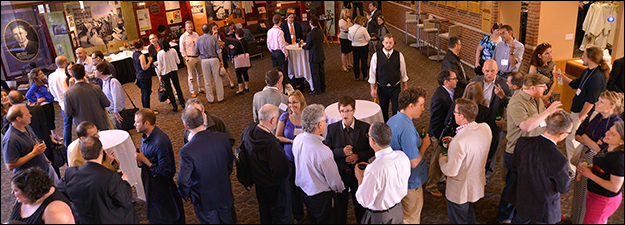Approaching Portraiture across Medieval Art
Sponsoring Organization(s)
Special Session
Organizer Name
Maeve Doyle
Organizer Affiliation
Bryn Mawr College
Presider Name
Maeve Doyle
Paper Title 1
Identity, Reproduction, and Embodied Legacy in the Life of Saint Albinus of Angers
Presenter 1 Name
Sasha Gorjeltchan
Presenter 1 Affiliation
Univ. of Toronto
Paper Title 2
Portraying Monks in Medieval Service Books
Presenter 2 Name
Kyunghee Pyun
Presenter 2 Affiliation
Fashion Institute of Technology
Paper Title 3
Portraits in Perpetuity
Presenter 3 Name
Catherine Walden
Presenter 3 Affiliation
Independent Scholar
Start Date
14-5-2015 1:30 PM
Session Location
Schneider 1360
Description
Figural representations of specific, contemporary people served numerous purposes in medieval societies, from commemorative and memorial functions to assertions of political power or social status, markers of ownership and use, and enactments of piety. Portraits, furthermore, proliferate across media, in stained glass, manuscript, and sculpture both monumental and miniature. This variety of historical, religious, and material contexts inflects the function of medieval portraits and their reception. While portraiture had long been considered an essentially modern genre, recent scholarship has worked to establish terms for considering portrait forms within the social, artistic, and theological contexts of the Middle Ages. In his book on royal representations in late medieval France, Stephen Perkinson situated the rise of veristic portraiture within the social and artistic concerns of the Valois court. Scholars such as Brigitte Bedos-Rezak and Alexa Sand, on the other hand, have approached the question of portraiture through medium-specific studies of personal seals and illuminated manuscripts, respectively. These studies emphasize the extent to which the creation and reception of a portrait depends upon its specific historical and material contexts. This panel seeks to explore the degree to which such focused studies can inform one another. In order to further investigation into medieval portraiture (or portraitures), this panel spotlights studies of portraiture across contexts and across media and places them into dialog with one another.
Maeve Doyle
Approaching Portraiture across Medieval Art
Schneider 1360
Figural representations of specific, contemporary people served numerous purposes in medieval societies, from commemorative and memorial functions to assertions of political power or social status, markers of ownership and use, and enactments of piety. Portraits, furthermore, proliferate across media, in stained glass, manuscript, and sculpture both monumental and miniature. This variety of historical, religious, and material contexts inflects the function of medieval portraits and their reception. While portraiture had long been considered an essentially modern genre, recent scholarship has worked to establish terms for considering portrait forms within the social, artistic, and theological contexts of the Middle Ages. In his book on royal representations in late medieval France, Stephen Perkinson situated the rise of veristic portraiture within the social and artistic concerns of the Valois court. Scholars such as Brigitte Bedos-Rezak and Alexa Sand, on the other hand, have approached the question of portraiture through medium-specific studies of personal seals and illuminated manuscripts, respectively. These studies emphasize the extent to which the creation and reception of a portrait depends upon its specific historical and material contexts. This panel seeks to explore the degree to which such focused studies can inform one another. In order to further investigation into medieval portraiture (or portraitures), this panel spotlights studies of portraiture across contexts and across media and places them into dialog with one another.
Maeve Doyle

